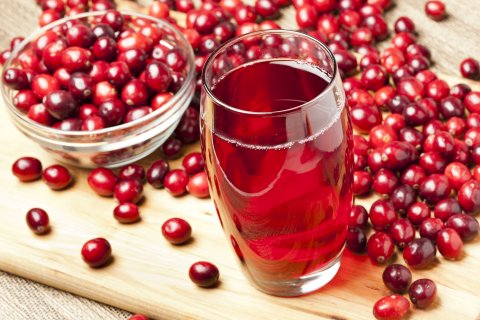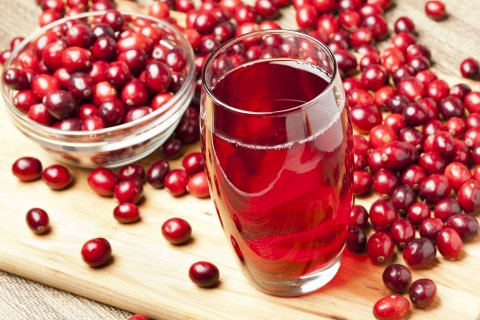LAKEVILLE-MIDDLEBORO, Mass.--(BUSINESS WIRE)--A new study1 reveals that drinking low-calorie cranberry juice cocktail may help lower the risk of chronic diseases that rank among the leading causes of death worldwide, including heart disease, diabetes and stroke. The finding is welcome news considering the World Health Organization estimates the trio of diseases annually claim 15.6 million lives around the globe.2 These illnesses are among the most common and costly health conditions, but fortunately, they are also among the most preventable through dietary intervention. That’s where this research comes in. It shows that cranberries provide a rich source of protective compounds - called polyphenols – that support our body’s natural defenses and help us achieve a balanced lifestyle to improve health.
Sipping Your Way to Better Health
To discover the extent to which polyphenol-rich cranberries can bolster whole-body health, researchers from the United States Department of Agriculture (USDA) provided eight weeks’ worth of meals to 56 healthy adult volunteers (average 50 years of age). One group drank a glass (8 oz) of low-calorie cranberry juice twice daily (16 oz total). Meanwhile, the other group drank a placebo beverage with a similar color and flavor.
“At the start and end of the experiment, the researchers measured things like blood pressure, blood sugar levels, blood lipids, as well as C-reactive protein, a marker of inflammation,” explained Christina Khoo, PhD, Director of Research Sciences at Ocean Spray. “All of these measurements come together to tell a story. The worse off these numbers are in an individual, the more likely he or she will face a health condition like diabetes, heart disease or stroke in the future.”
Individuals drinking two glasses of low-calorie cranberry juice a day improved across all these measures. It’s a change that adds up, and could be associated with a 10 percent lower risk of heart disease and a 15 percent lower risk of stroke.3 Of note, the reductions in blood pressure numbers alone matched those achieved from top-rated diets such as DASH (Dietary Approaches to Stop Hypertension)4; an eating pattern established as the gold standard for lowering blood pressure after several successful studies by the National Institutes of Health.
Power-Packed with Polyphenols
“These findings suggest that polyphenols help to protect our bodies, and may be adept at keeping a large number of ailments at bay,” said Dr. Khoo. “Luckily for us, a rich source of polyphenols is only a glass of cranberry juice away. Among the commonly consumed fruits in our diets, cranberries boast some of the highest levels of polyphenols – more than apples, blueberries, grapes or cherries.”
Incorporating these tart-tasting berries into our daily diets is a sustainable and practical lifestyle approach that holds notable promise for improving health. In addition to the cardiometobolic effects of polyphenols, cranberries also contain unique proanthocyanidins (PACs) that may help prevent certain bacteria from sticking inside the body.
Track Record of Whole-Body Health
The findings by the team of USDA researchers that drinking cranberry juice could lower disease risk comes on the heels of supporting research that further espouses cranberry products as part of a healthy diet and balanced lifestyle. Two recent studies5,6 analyzing four years’ worth of data from the Center for Disease Control’s National Health and Nutrition Examination Survey (NHANES), found that those who regularly drink cranberry juice are more likely to be normal weight, have significantly lower waist circumference and showcase improved heart health characteristics. Add these benefits to cranberry’s known track record of maintaining urinary tract health, and you have the makings of quite the all-star berry.
For more information on the health benefits of cranberries, visit www.cranberryhealth.com.
About Ocean Spray
Ocean Spray is a vibrant agricultural cooperative owned by more than 700 cranberry and grapefruit growers in the United States, Canada and Chile who have helped preserve the family farming way of life for generations. Formed in 1930, Ocean Spray is now the world’s leading producer of cranberry juices, juice drinks and dried cranberries and is the best-selling brand in the North American bottled juice category. The cooperative’s cranberries are currently featured in more than a thousand great-tasting, good-for-you products in over 90 countries worldwide. With more than 2,200 employees and nearly 20 cranberry receiving and processing facilities, Ocean Spray is committed to managing our business in a way that respects our communities, employees and the environment. In fiscal year 2014, Ocean Spray posted gross sales of over $2 billion. For more information visit www.oceanspray.com or www.oceanspray.coop
1 Novotny, J et al. “Cranberry Juice Consumption Lowers
Markers of Cardiometabolic Risk, Including Blood Pressure and
Circulating C-Reactive Protein, Triglyceride, and Glucose Concentrations
in Adults.” The Journal of Nutrition. 2015; http://www.ncbi.nlm.nih.gov/pubmed/25904733
2
World Health Organization. “Top 10 Causes of Death Fact Sheet.” WHO
Media Centre. 2014. http://www.who.int/mediacentre/factsheets/fs310/en/
3
Collins, R et al. “Blood Pressure, Stroke, and Coronary Heart Disease.
Part 2, Short-Term Reductions in Blood Pressure: Overview of Randomised
Drug Trials in Their Epidemiological Context.” Lancet. 1990;
335:827–38. http://www.ncbi.nlm.nih.gov/pubmed/1969567
4
Heller, M. “What Is the DASH Diet?” The DASH Diet Eating Plan. 2015. http://dashdiet.org/what_is_the_dash_diet.asp
5
Duffey KJ et al. “Adult Cranberry Beverage Consumers Have Healthier
Macronutrient Intakes and Measures of Body Composition Compared to
Non-Consumers: National Health and Nutrition Examination Survey (NHANES)
2005–2008.” Nutrients. 2013; 5.12:4938-49. http://www.mdpi.com/2072-6643/5/12/4938/htm
6
Duffey KJ et al. “Adult consumers of cranberry juice cocktail have lower
C-reactive protein levels compared with nonconsumers.” Nutrition
Research. 2015; 35.2: 91-174 http://dx.doi.org/10.1016/j.nutres.2014.11.005




